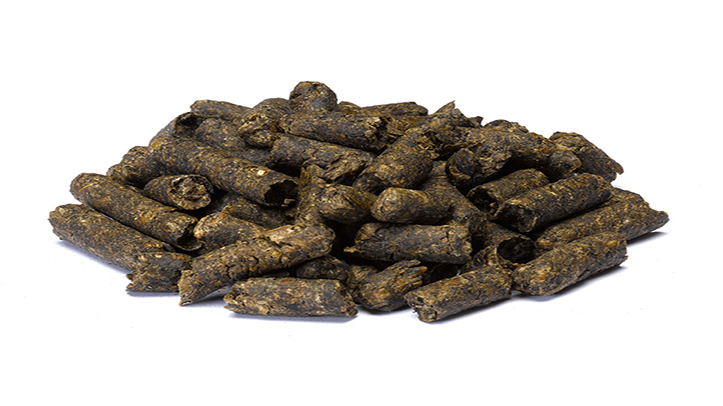With greater pressure to reduce farm carbon footprints, and a growing number of milk contracts aligned to GHG strategies, dairy producers are being urged to focus on improving feed efficiencies, to meet performance targets and responsibility requirements.
“The inclusion of UK co-products in ruminant rations can be used strategically, to help boost feed efficiency and improve performance, profitability and sustainability,” said Charlotte Ward, ruminant technical manager at Trident Feeds.
“For example, sugar beet feed, generated from the production of sugar, has been shown through globally recognised methodology, to carry a significantly lower carbon footprint compared to soya hulls derived from South American soya.”
Trident sugar beet feed, a mainstay of British livestock feeding since the 1920s, is the most effective source of digestible fibre-based energy available for ruminants.
“British-grown, and non-GM, Trident sugar beet feed provides a balanced source of ‘rumen friendly’ energy, helping to maintain or increase milk production, without increasing the risk of acidosis,” said Ms Ward.
“This digestible fibre also provides the building blocks for milk fat synthesis, increasing value, and an improved carbon footprint, per litre of milk.”
Being highly palatable, sugar beet feed drives feed intakes, whilst the slowly fermentable energy helps buffer against digestive upsets associated with high-starch diets, leading to improved feed conversion efficiency and increased animal performance, across a variety of ruminant rations.
Sugar beet feed also contains high-levels of the beneficial feed components, pectins, helping to improve rumen function and performance.
“Pectins are unique carbohydrates, from plant cell walls that ferment as rapidly as starch in the rumen, but produce the same acetate, a milk fat precursor, that comes from digestible fibre,” said Ms Ward.
While most concentrate feeds contain less than 3% pectins (DM basis), digestible fibre feeds contain much higher levels, estimated to be around 35% for sugar beet feed, 24-26% for soya hulls and 15% for citrus pulp pellets.
Pectins are self-regulating, so if rumen pH falls, pectin fermentation slows until conditions improve.
“This boosts the buffering effects usually only associated with digestible fibre, and is a big part of the reason why feeds like sugar beet feed regularly outperform others, which on paper, have a much higher digestible fibre content,” said Ms Ward.
The use of co-products such as sugar beet feed can help boost performance and profitability, while helping reduce carbon footprints and meet milk contract requirements.
Competitively priced
“With sugar beet feed now available on a par with processed cereals, and a considerable reduction in 2023 prices, this represents good value for a more rumen friendly energy source from digestible fibre, rather than starchy cereals,” explained Mark Mills, commercial manager at Trident Feeds.
“Contact your stockist today and benefit from the fibre-packed solution to help maximise milk production and meet your contract requirements.”


